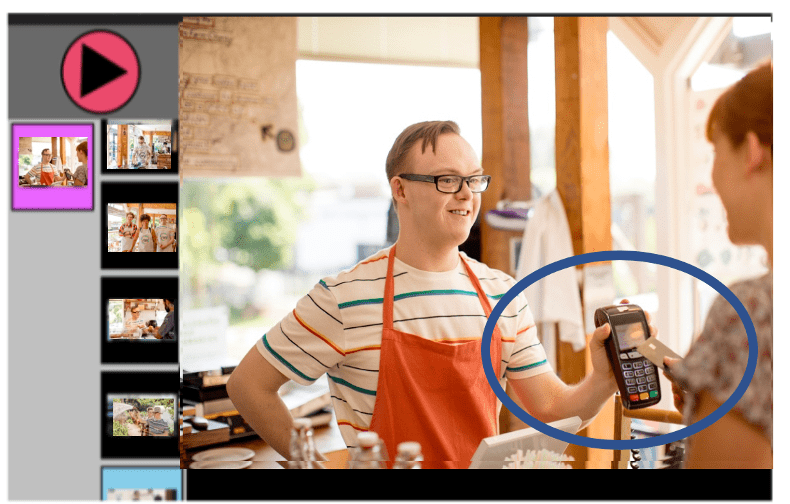Team Leaders: David McNaughton, Janice Light
AAC Consumer Team: Chris Klein, Tracy Rackensperger
Challenge
- Less than 5% of individuals with complex communication needs are employed full time.
- Less than 10% of adults with severe intellectual or multiple disabilities have access to effective means to participate in community activities.
Past work
RERC on AAC (2014-20) developed a video VSD AAC app that integrates
- Video models of individuals completing tasks
- Captured via built-in camera/wireless
- AAC supports for communication
- Messages are embedded into videos at key junctures (“hot spots” are created)
- 100% of participants showed increases in their community participation

Goals
The new RERC on AAC will complete a large scale evaluation of video VSD technology under real world conditions. We will identify the key intervention activities which best support increases in successful participation in vocational and community activities by individuals with complex communication needs.
Updates
Additional Information
Babb, S., Jung, S., Ousley, C., McNaughton, D., & Light, J. (2021). Personalized AAC intervention to increase participation and communication for a young adult with Down syndrome. Topics in Language Disorders, 41(3), 232-248. https://doi.org/10.1097/TLD.0000000000000240
Babb, S., McNaughton, D., Light, J., Caron, J., Wydner, K., & Jung, S. (2020). Using AAC video visual scene displays to increase participation and communication within a volunteer activity for adolescents with complex communication needs. Augmentative and Alternative Communication, 36 (1), 31-42.
Babb, S., Gormley, J., McNaughton, D., & Light, J. (2018). Enhancing independent participation within vocational activities for an adolescent with ASD using AAC Video Visual Scene Displays. Journal of Special Education Technology, 34(2), 120-132.
O’Neill, T., Light, J., & McNaughton, D. (2017). Videos with integrated AAC visual scene displays to enhance participation in community and vocational activities: Pilot case study with an adolescent with autism spectrum disorder. Perspectives of the ASHA Special Interest Groups, 2(12), 55-69.
